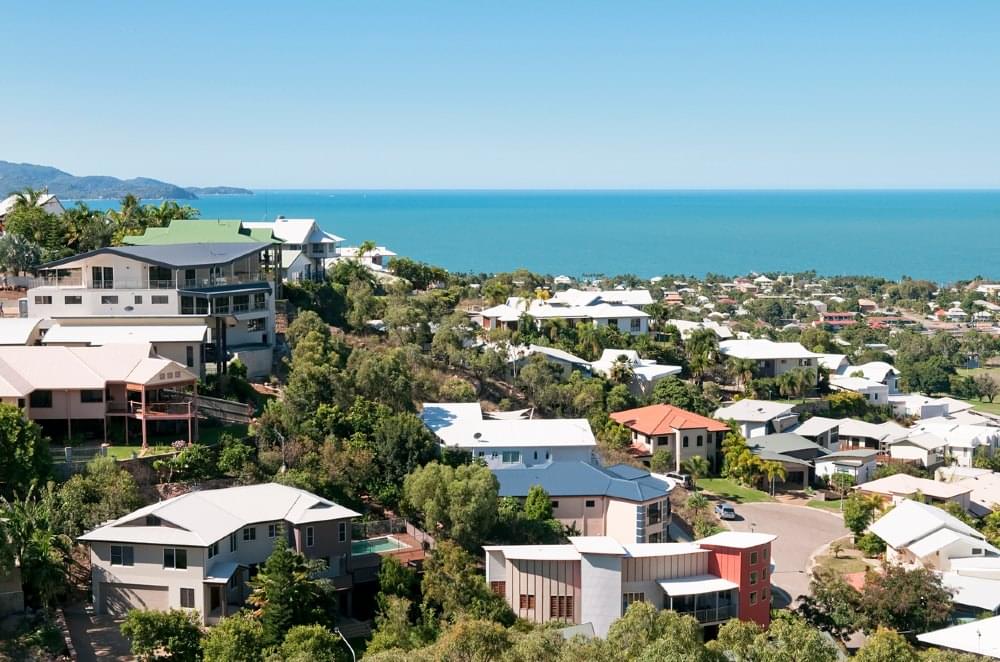Australian property market update - November 2019
Looking back at November means it's time for our monthly Australian property market update, which is an overview of the strongest and weakest national property values and conditions in our capital cities and regional areas.
The one question front of mind for sellers, buyers and investors alike is if the market can continue its recent momentum particularly in light of the broader slowdown in the national economy.
Let's start our analysis with an overview of national property values.
National property values: November 2019

Houses
$548,906
Monthly change: +1.8%
Units
$507,433
Monthly change: +1.5%
The obvious highlight for national property values is that the recovery continues, with CoreLogic data showing that overall national values increased +1.7% over November, the fifth consecutive monthly rise and the largest monthly advance since 2003.
Demand for houses outstripped units advancing +1.8% vs +1.5%, for medians of $548,906 and $507,433 respectively.
Much of the activity has been in Sydney and Melbourne where buyers have pushed values up by +2.7% and +2.2% respectively. Domain analysis points to much of this activity occurring in the mid to upper end of the market. This segment often leads the market - so it will be interesting to see if this holds true as we move into 2020.
Other capitals are also in positive territory, including Perth - which could signal that market finally emerging from the doldrums. In total, four cities moved back into the black for the year, with 2017 star Hobart (+4.2%) leading the pack, followed by Canberra (+3.0%), Melbourne (+2.2%) and Sydney (+1.6%). Values are positive for many regional markets, but not to the same extent as urban areas.
Market update: Sydney and regional NSW
Houses
$956,249
Monthly change: +3.1%
Units
$736,530
Monthly change: +1.8%
It is good news for property owners in Sydney as houses and units both advanced over the month, +3.1% and +1.8% respectively. This is less good news for buyers, as affordability is once again diminishing as the market rebounds. Baulkham Hills and the Hawkesbury leads the charge up +4.3% for the year, while Ryde is up +9.3% for the three months to November.
Regional cities are also on the up, including Illawarra (+4.2%) and the Newcastle/Lake Macquarie area (+2.8%).
Read: Best suburbs to invest in Sydney 2020
Market update: Melbourne and regional VIC
Houses
$774,023
Monthly change: +2.4%
Units
$572,398
Monthly change: +1.9%
Melbourne is the best performing capital city over the three months to November 2019 having advanced +6.4% over this timeframe, with house prices growing +2.4% over November and units up +1.9%.
Property is still a lot more affordable than Sydney by $150,000+, which explains why people are flocking to live in the Victorian capital. Melbourne's leafy inner east suburbs are leading the charge in this market, up a whopping +5.0% for the year to date.
Bendigo is the pick of the Victorian regional markets, up +2.8% over the same timeframe.
Read: Best suburbs to invest in Melbourne 2020
Market update: Brisbane and regional QLD
Houses
$543,992
Monthly change: +0.9%
Units
$385,133
Monthly change: +0.3%
Brisbane dwelling values grew more modestly over the month up +0.8% overall, for a median dwelling value of $497,491.
If you are looking for more growth potential, consider regional Queensland centres, where the Mackay/Isaac/Whitsunday area grew +2.9% over the three past three months, as did Cairns.
The drought continues to impact Outback areas across the country, and property values in this part of the state are down -27% for the year.
Read: Best suburbs to invest in Brisbane 2020
Market update: Hobart and regional TAS
Houses
$509,177
Monthly change: +2.2%
Units
$384,999
Monthly change: +2.6%
The sun is shining again in Tassie after a downturn that started in 2018. CoreLogic data shows that Hobart dwellings are up +4.2% for the year, with houses +2.2% and units up +2.6% in November.
Regional areas are where all the action is now after the West/North West region grew nearly +6% over the year to date, with the South East up +5.3% over the same timeframe.
Read: Best suburbs to invest in Hobart 2020
Market update: Canberra and the ACT
Houses
$687,798
Monthly change: +1.8%
Units
$434,999
Monthly change: +1.0%
Canberra's real estate market continues its steady growth, up a respectable +3.0% YTD, and +1.6% for November. The median house price is currently $687,798 with the unit median at $434,999. Consistent demand for housing is the key here, as universities and government continue to be major employers in the nation's capital.
Read: Best suburbs to invest in Canberra 2020
Market update: Adelaide and regional SA
Houses
$469,270
Monthly change: +0.5%
Units
$323,611
Monthly change: +0.8%
Adelaide recorded marginal gains for November, with houses up +0.5% and units +0.8%, for a positive +0.9% on the quarter and a median dwelling value of $433,845. Growth is patchy across the city, with suburbs in the west down -3.4%, while some regional areas in the state - notably the South East in positive territory and up +2.2% for the YTD.
Read: Best suburbs to invest in Adelaide 2020
Market update: Perth and regional WA
Houses
$453,393
Monthly change: +0.4%
Units
$352,154
Monthly change: +0.3%
Finally, a glimmer of hope for Perth and WA as dwelling values moved up +0.4% in November; the first month-on-month rise since early 2018.
With a median property value of $437,080, the city is an affordable option for first time home buyers. This is evident in CoreLogic data from June 2019 which shows that Perth has the lowest dwelling value to income ratio of the major capitals at 5.2, while Sydney has the nation's highest at 8.2.
Overall the market is still down -7.7% for the YTD, but this could be the beginning of a turnaround for this depressed market.
Regional WA farming areas continue in the red, the Outback down -18.9% and the Wheatbelt -17.5% over the YTD.
Read: Best suburbs to invest Perth 2020
Market update: Darwin and regional NT
Houses
$462,970
Monthly change: -1.8%
Units
$283,774
Monthly change: 0%
Darwin is the only state capital to post a loss during the course of the month, and is also down -1.1% over the three months to November 2019. Houses are still under pressure down -1.8% while units are flat, which brings dwelling values down -10.9% for the YTD.
Read: Best suburbs to invest in Darwin 2020
Rental listings and vacancy rates
Rental markets are still flat overall, with asking rents unchanged across capital cities and trending lower -0.1% in Sydney in November. This can largely be put down to supply, with a glut of apartment developments dampening prices.
Over the year Hobart (+5.8%) and Perth (+2.3%) are the standouts in terms of rental increases, though gross rental yields are down across the combined capitals to 3.56%.
What does all this mean and what can we expect?
The recent resurgence in the market is down to a few factors, led by rate cuts, the federal election result and it being easier to qualify for a home loan. Advertised stock levels remain low, which makes Tim Lawless, Head of CoreLogic Research, believe that that prices will continue their trajectory into early 2020.
Domain points out that rising house prices have a knock-on effect and help the broader economy as homeowners spend on renovations and homewares, but rising property prices continue to hurt overall affordability.
Only 2020 will tell if the current rebound in property prices is a blip or a more sustained recovery - so be diligent with your research if you are thinking of investing, and look for areas that have multiple long-term growth drivers.
Read more: National property market forecast 2020








